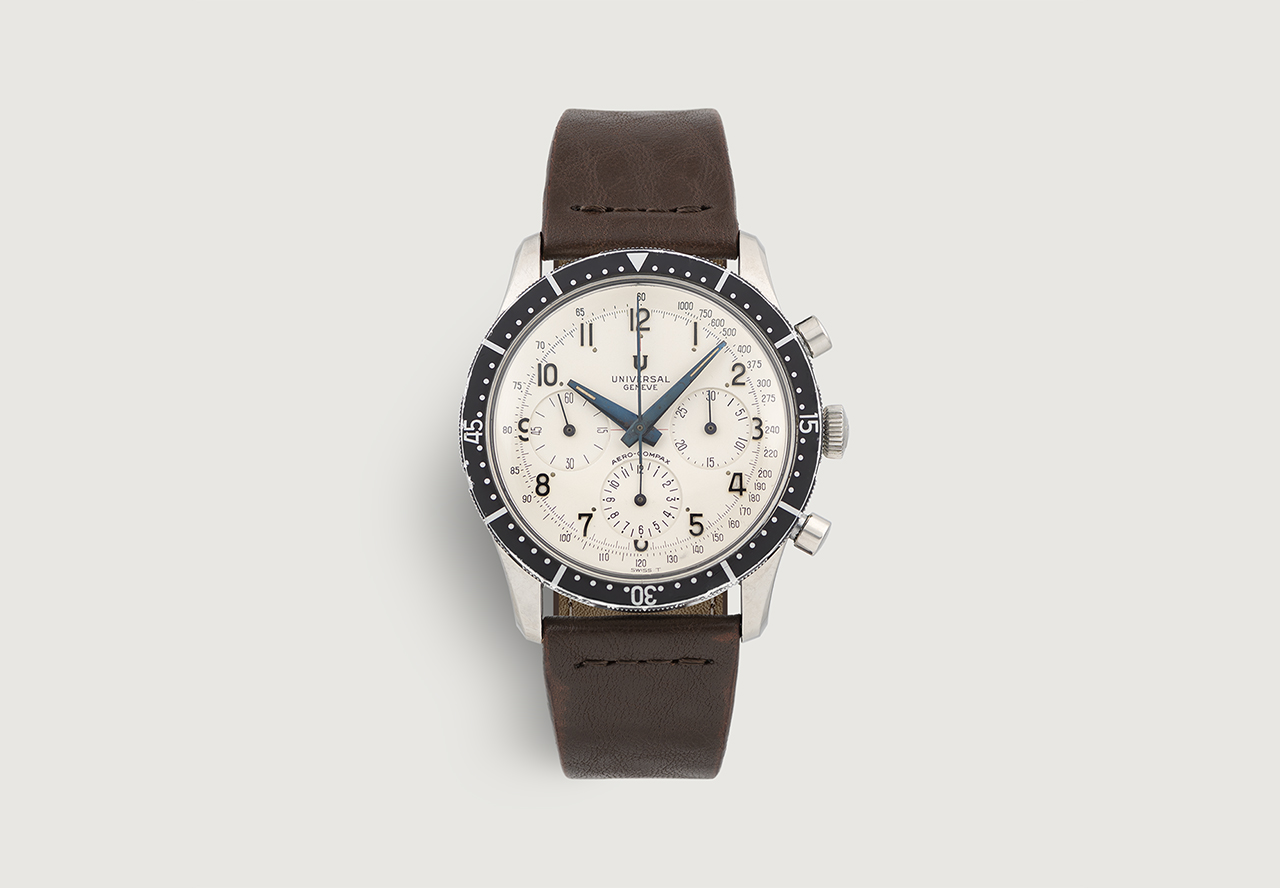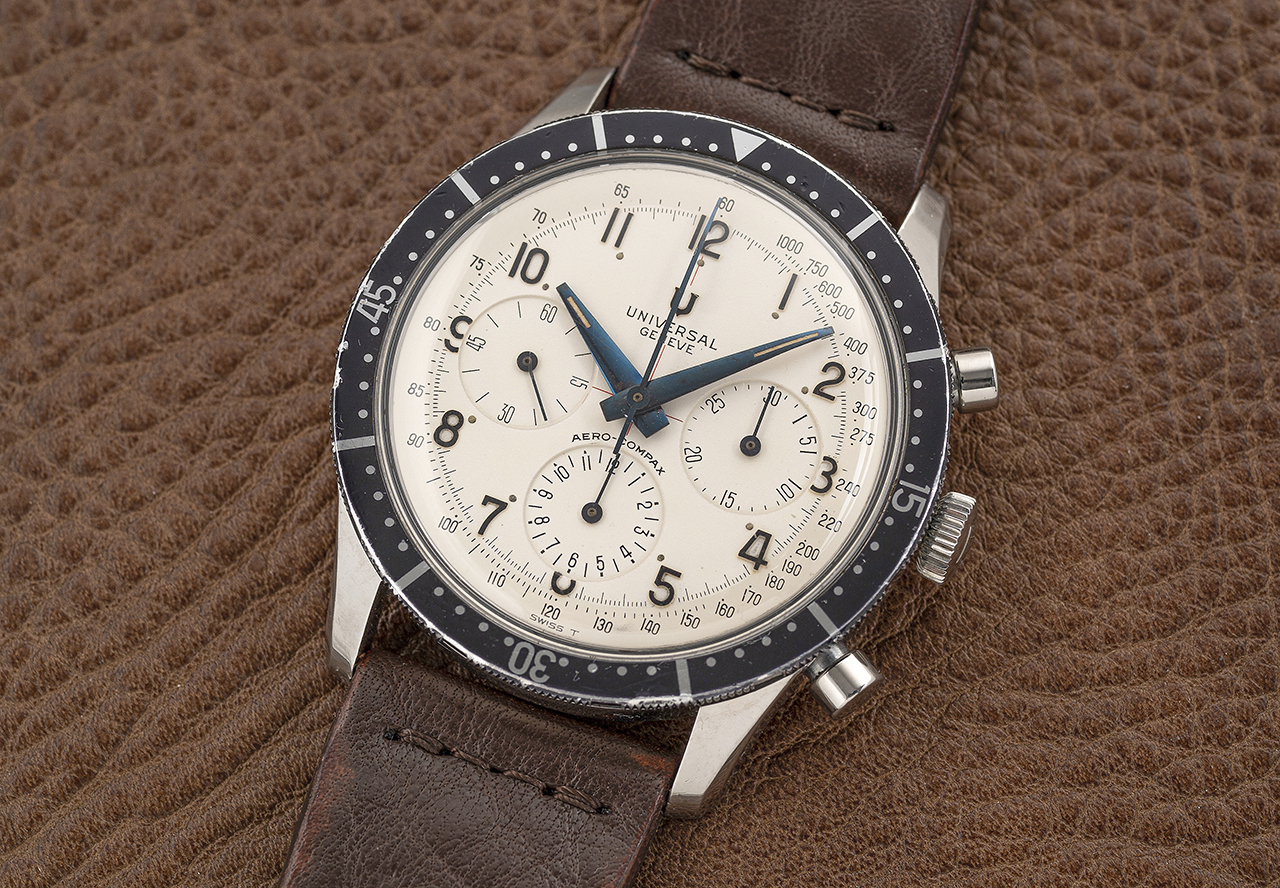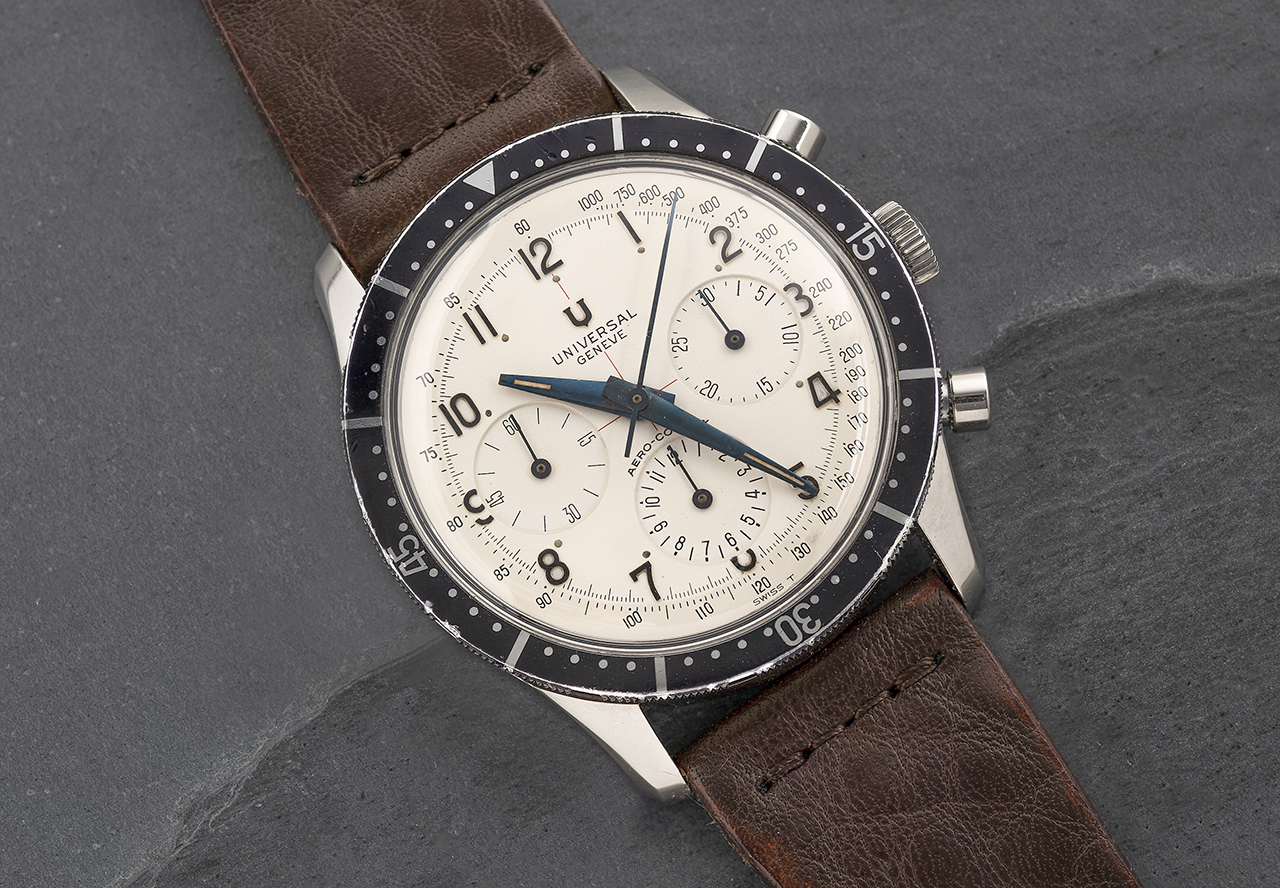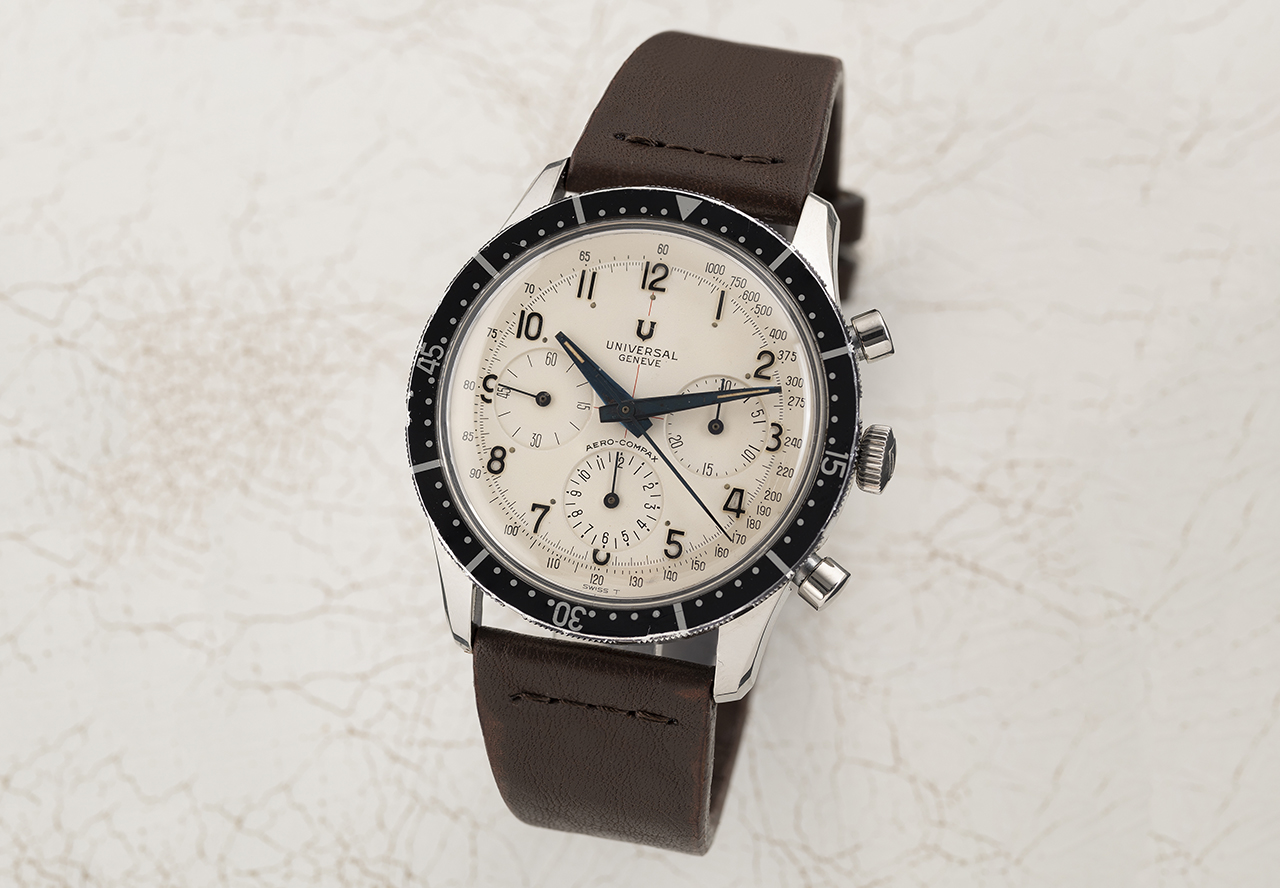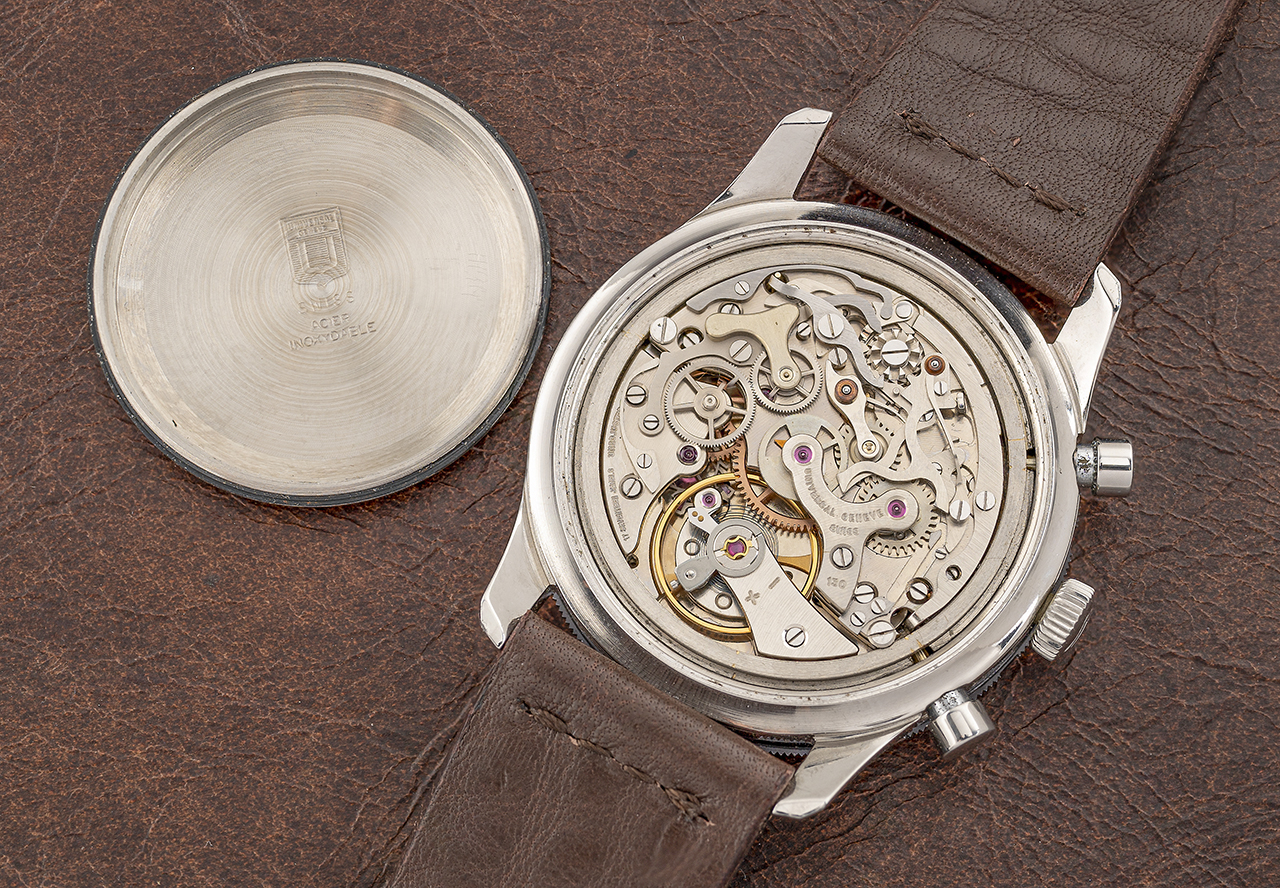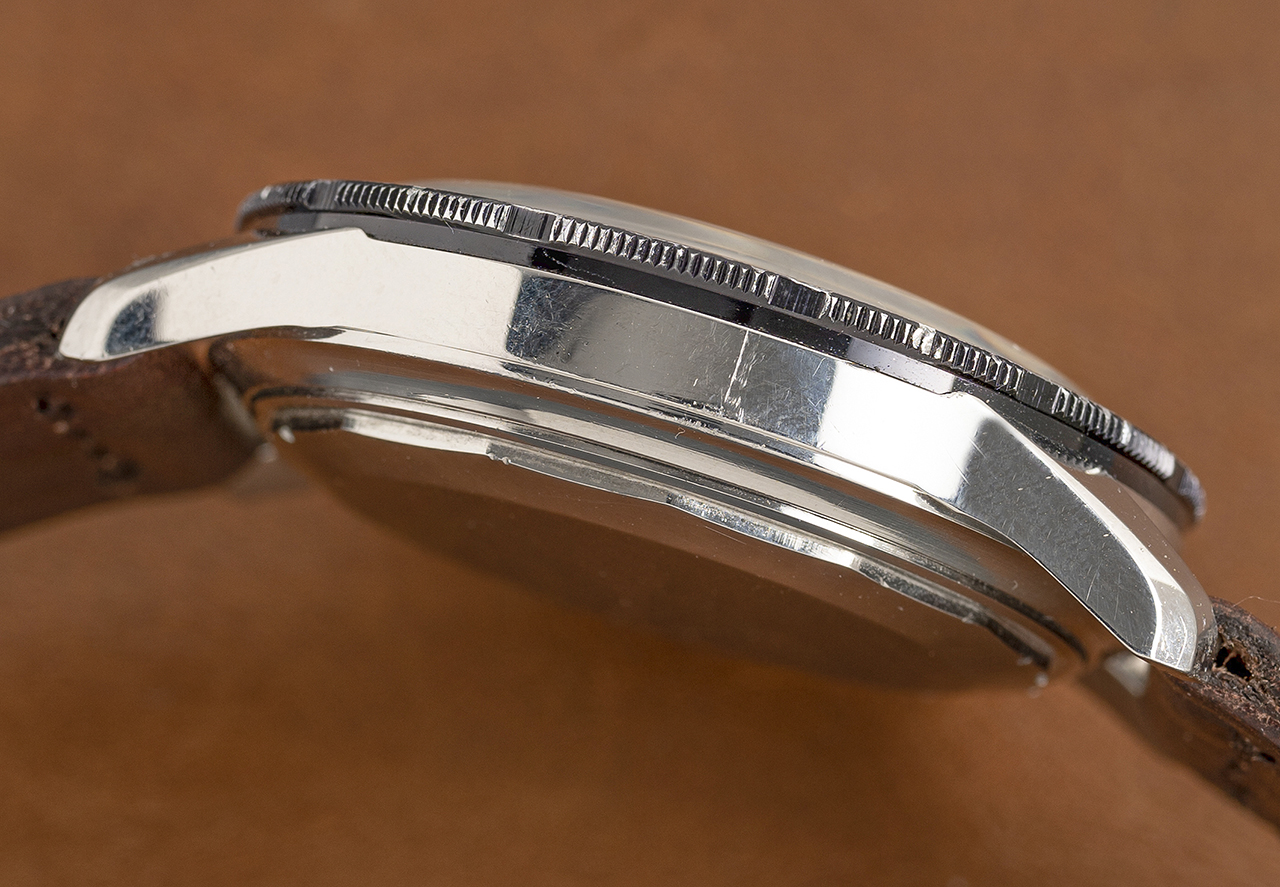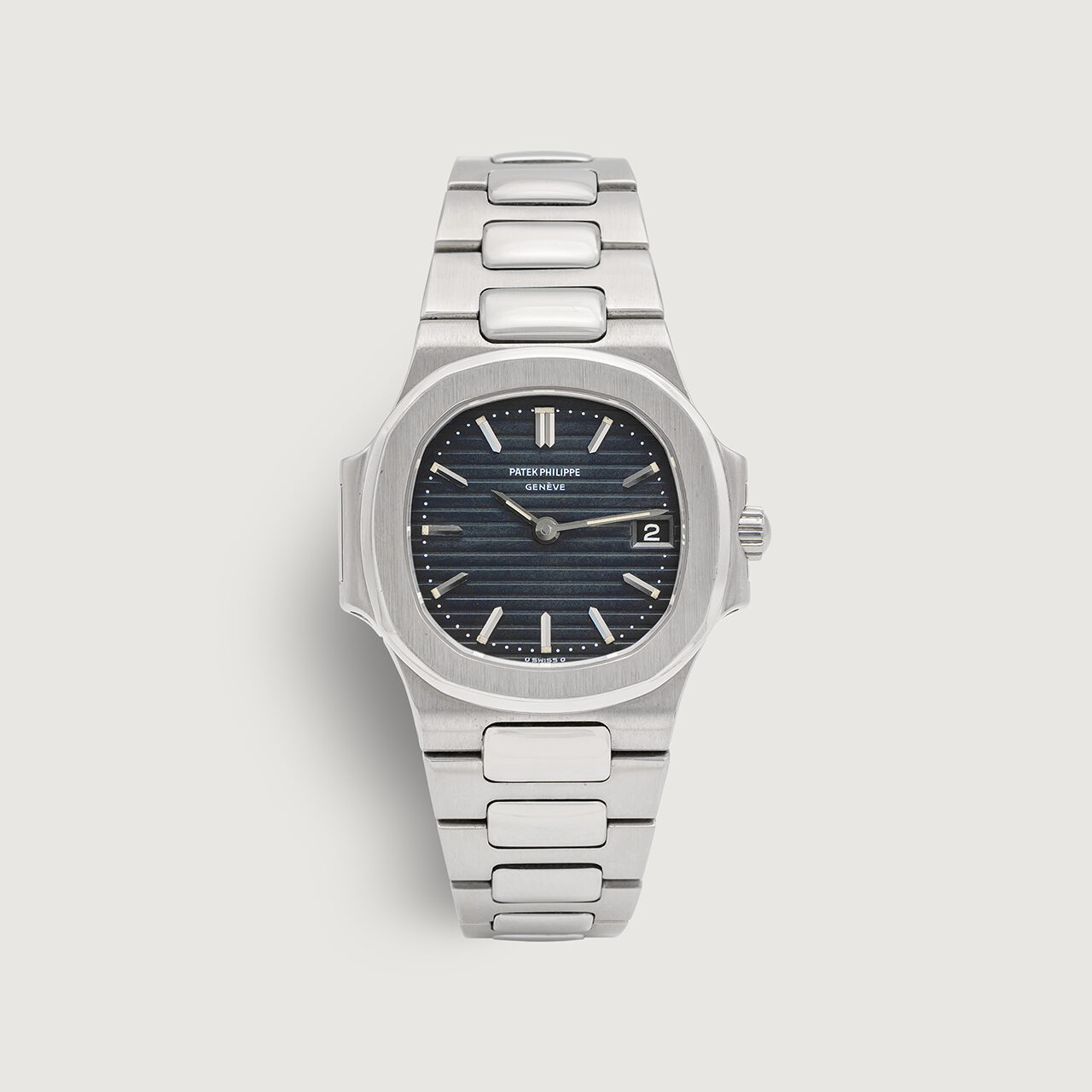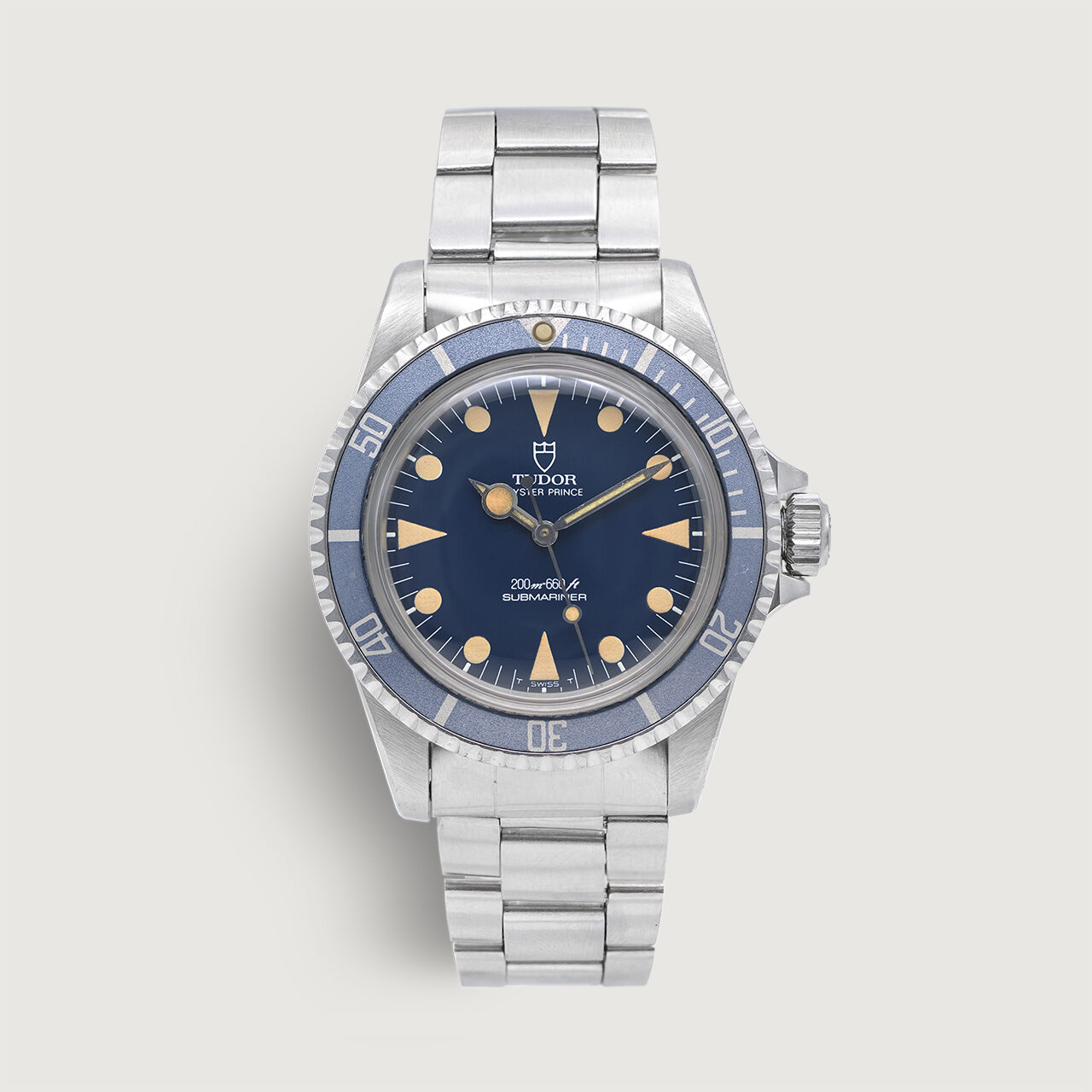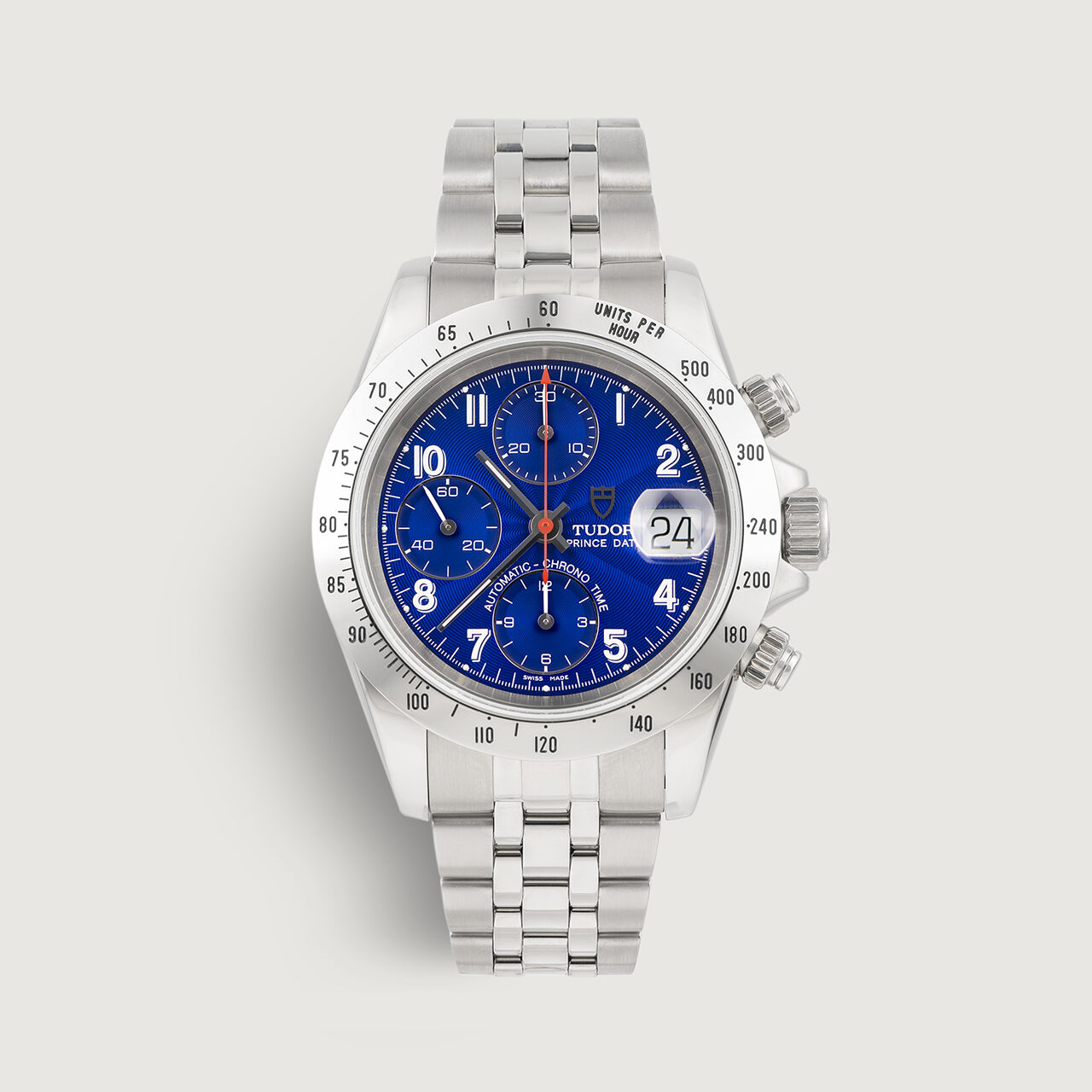Universal Genève Aero-Compax Chronograph
SOLD
Out of stock
DETAILS
The Aero-Compax was released in the early 1960s and were made with a target audience in mind: pilots. The dial is a highly legible two-tone dial, featuring bold Arabic numerals and large hands. The design of the dial is extremely well thought out, with a red crosshead splitting the dial into four quadrants to the large Arabic numerals and blued steel hands – all deliberately designed to increase legibility. The dial also sports a tach-o-meter scale on the outer ring and also makes use of an applied Universal Genève logo, adding a nice touch.
The watch features a large 40mm stainless steel case with rotating 60 minute bezel. It features a screw-down case back for increased protection against dust and moisture. This Aero-Compax was available with either 24-hour or 12-hour dials, the latter being rarer of the two. The 24-hour variants were fitted with calibre UG90 (base cal. Venus 178), the 12-hour watches such as this are equipped with Universal’s calibre 130 (base cal. Valjoux 72). This base calibre Valjoux 72 also featured in the Rolex Daytona and Heuer chronographs from the same period.
Overall, not only this is this a very rare UG model, it is also an excellent example. The case is still sharp with the serial and reference numbers still legible on the case back. The movement is clean and fully functioning.
| LOCATION | London – UK |
|---|---|
| BRAND | Universal Geneve |
| MODEL | Aero-Compax |
| YEAR | 1960s |
| REFERENCE | 22703/3 |
| METAL | Stainless Steel |
| MOVEMENT | Manual-Wind Valjoux 72 Signed Universal Genève Calibre 130 |
| CASE DIAMETER | 40mm |
| BRACELET/STRAP | Brown Leather Calf-Skin w/ a Steel Pin Buckle |
| BOX/PAPERWORK | Watches of Knightsbridge |
| CONDITION | Good |
STORY BEHIND
Universal introduced its famous “Compax” chronograph family in 1935 and was one of the earliest chronograph wristwatches made that included both minute and hour registers. Universal successfully modernised its chronograph production over the next 40 years, and introduced a number of variants with specific additional functions pending the markets needs, creating a number of different “Compax” variants, such as the Uni-Compax, Tri-Compax and Aero-Compax.
